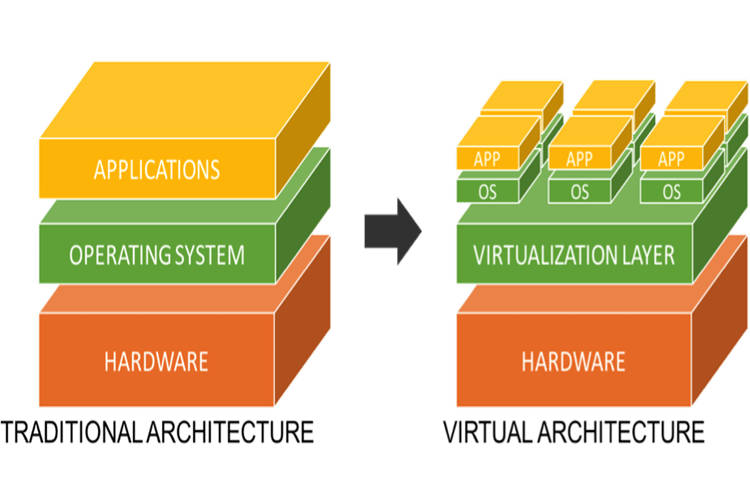Today’s computing software and hardware infrastructure users are all in for the cloud. Cloud computing has become so popular these days because of its unique features, cost effectiveness and on-demand nature.
Now app developers, different computer applications owners, organization IT departments are all rushing and transferring their applications or even building new ones on the cloud.
Cloud computing has become increasingly more accessible like never before. With cloud services, an organization of any size can setup its IT infrastructure in a matter of hours or few days and it will be up and running in no time – no initial investment and maintenance fee on some heavy and expensive computing equipment. All you need is the right cloud provider. In this article, therefore, we are going to look at cloud computing, its services, characteristics, deployment methods and much more.
What is cloud computing?
According to National Institute of Standards and Technology (NIST) cloud computing is a model for enabling ubiquitous, convenient, on-demand network access to a shared pool of configurable computing resources (e.g., networks, servers, storage, applications, and services) that can be rapidly provisioned and released with minimal management effort or service provider interaction. Simply put, cloud computing enables a wide range of users enjoy all services provided by massive computing resources provided by cloud service providers (CSP) without owning them or having them on site. It is a concept of deploying services of massive network of computing infrastructures, data storage facilities, communication and networking devices and a team of highly qualified engineers on demand. Anyone can get these services without even knowing where the physical devices located, all you need is a workable internet network and authorization to access the services offered by different CSPs.
Cloud computing services
Available cloud computing services that can be provided anywhere includes:
- Infrastructure as a Service (IaaS)
- Platform as a Service (PaaS)
- Software as a Service (SaaS)
Infrastructure as a Service (IaaS)
This is a very comprehensive service whereby the cloud service providers offer and manage a kind of virtualize computing resources of infrastructure of servers, network and communication technologies, storage facilities, software, and any other computing hardware need of customers.
Platform as a Service (PaaS)
PaaS is a kind of cloud computing service where the cloud service providers offer the computing infrastructure, operating systems, programming environment and other programming tools for client to create whatever piece of software or program that they desire to create via the cloud.
Software as a Service (SaaS)
It is one of the most use cloud computing services. SaaS is a third-party application software provided by cloud service providers over the internet. Examples of such application software are email clients like Gmail, storage applications like Dropbox, package of productivity software like Microsoft office 360. Simply put, SaaS cloud services are any application software services that users receive through the web without installing the software in their computer.
Cloud deployment models
- Single and multi-public cloud: Cloud infrastructure owned and managed by cloud service providers such as academic, government, business organizations or a combination of some of them. Its available to the public and it exist on the premise of the provider.
- Single and multi-private cloud: cloud infrastructure exclusively for single organization with multiple consumers such as different units of the same organizations. It may exit on the premise of the organization or on the premise of a third-party provider.
- Community cloud: This cloud deployment method supports multiple organizations sharing of the same infrastructure. But mostly the sharing organizations have similar cloud service requirement. It can be deployed and managed on premise of the organization or third-party premise.
- Hybrid cloud: It is a combination of two or more of the cloud deployment methods; private, public and community. Hybrid cloud deployment model is designed to meet up with the business specific and unique needs. The cloud infrastructure may exist on premise or off premise or a combination of off and on premise based on the needs and demand of an organization.
Key technologies in cloud computing
Some of the key enabling technologies in cloud include:
1. Virtualization: It is a virtual computer running on physical computer. This is a technology that uses a piece of software called hypervisor on a physical computer to create virtual resources like storage, ram processors or mostly a complete virtual computer. In cloud computing, virtualization helps in creating multiple virtual computers on a single physical computer.

Photo credit: Infosec
2. Grid computing: It is a type of computing where several computers/servers that are not connected physically work as a cluster of computers to accomplish a task in unison. Cloud computing makes great use of this wonderful technology in order to break up big problem/task into several smaller tasks across these cluster of computers to achieve greater efficiency and performance.

Photo credit: Academic College Projects
3. Utility computing: This concept of computing relies on a pay per utilize model. Its delivered computing services as metered services just like the traditional utility services that we know. This saves initial investment and continuous maintenance cost for the customers. When the usage is high you pay high when it’s low the cost dropped.
Characteristics of cloud computing
There are so many features and characteristics that defined cloud computing, the most important ones are:
1. On-demand self-service.
Perhaps the most recognize feature of cloud computing is the on-demand nature of it. Users have the leverage of getting the computing resources when they need it, on time with minimal IT help. A client can monitor the server uptime, network storage, the capabilities and more.
2. Broad network access
Cloud computing services enable broad network assessed for different users. Bandwidth and latency are important to cloud computing because it’s usually has a wide range of customers accessing the network. It is usually accessible through wide communication network like internet network or sometimes in the case of private cloud through local area network.
3. Resource pooling
Resource pooling allows multiple customers or users get cloud services from the same physical infrastructure. Always resource pool of a cloud service should be very large and flexible that can service multiple clients
4. Rapid elasticity
Rapid elasticity means that availability of which cloud services are provided to customers as soon as they are needed. And to be disabled when the services are no longer required.
5. Measured Service
With cloud computing services customers can only pay for what they consume. The cloud service is built based on pay-for-what-you-use model. So, customers can have access to a wide variety of services that require sophisticated infrastructural need but can only pay for the amount they used.
Impact of cloud computing in our daily lives
Cloud computing has impacted greatly in our lives that one cannot begin to imagine the level at which this impact has reached. Some of the various ways that we see the impact are:
1. Email services
Cloud computing is at the core of the email services that we enjoy today. In fact, email service providers provide the services via the internet from their various cloud infrastructure. That is why we can access our emails in any device provided there’s internet connection. Example of such emails are, Gmail, Yahoo mail etc.
2. Social media platform
Yes, we enjoy our social media networks too because of the cloud. That is why millions of people post billions of words and photos every day on the platforms, but they are still not fill to their capacity. All words and photos are saved in the cloud.
3. Video streaming services
Now you do not need to download movies or even documentaries from the internet, various video streaming services are available and affordable. They are utilizing cloud computing technology to host all the videos for you to see from their platform by simply signing up and subscribing based on demand. You get it when you need it and if you do not you cancel the subscription. Prominent example of such platform is Netflix.
4. Personal file storage
With cloud-based storage applications, now everyone can keep his/her word documents, photos, certificates and so many valuable documents without fear of destructions or loss of devices. Prominent of those storage applications are Dropbox, Google Drive and One Drive.
5. Education
Educational sector too sees a massive cloud computing impact in the last decades. The concept of virtual classes is all possible because of the cloud computing technology. Schools can offer teaching and learning activities via the internet on different cloud-based platform like google classroom. Students can participate on group discussions on those platform as though they were in their classrooms. Even exams are being conducted remotely by schools. And all thanks to cloud computing, schools or any educational institutions do not have to own these heavy and expensive IT infrastructures before enjoying these services.
6. Health
Cloud computing technologies also impacted greatly in the health care sector. Now hospitals use cloud-based database management systems to store their massive records. And they also leverage the cloud services for their integrated systems where patients’ records are always readily available regardless of their point of origin.
7. Government
Governmental sectors too are not left behind when it comes to the impact of cloud computing. So many governments are now adopting the use of cloud-based technologies in order to reduce cost, ease the burden of maintaining of traditional IT infrastructure and to help facilitate interdepartmental or interagency collaboration among government various sectors.
To sum up
In this article, we have covered the definition of the cloud computing as it is defined by NIST, then explored the main three cloud computing services namely, Infrastructure as a Service (IaaS), Platform as a Services (PaaS) and Software as a service (SaaS). We went on to talk about some of the popular technologies used in cloud computing. The deployment methods of the cloud computing were also discussed and finally we explored some of the characteristic features that defined/described what cloud computing is all about.
Thanks for stopping by and let me know your thoughts in the comment section below.
References
EDUCBA (n.d). Cloud computing technologies. Retrieved from
NIST (2011, September). The NIST definition of cloud computing. Retrieved from
https://nvlpubs.nist.gov/nistpubs/Legacy/SP/nistspecialpublication800-145.pdf
NIST (2019, July 9). NIST cloud computing program – NCCP. Retrieved from
https://nist.gov/programs-projects/nist-cloud-computing-program-nccp
NIST (2020, June 22) cloud computing. Retrieved from
https://csrc.nist.gov/Projects/Cloud-Computing
Stein, M., Campitelli, V., & Mezzio, S. (2020). Managing the Impact of Cloud Computing. CPA Journal, Vol 90 No 6, 20–27.


















